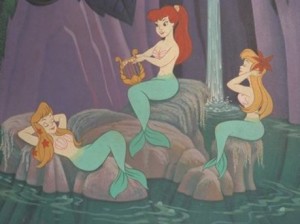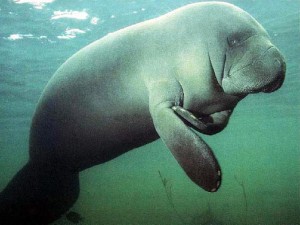Christopher Columbus and Mermaids October 16, 2010
Author: Beach Combing | in : Medieval, Modern , trackback Beachcombing cannot find it in himself to envy Christopher Columbus. All that salt water and all those incipient rebellions must have wreaked havoc on the good navigator’s blood pressure. But in one thing alone Beachcombing confesses to green-eyed rabid jealousy: the great Genovese explorer saw Mermaids, not once, but twice in his life, while the closest poor Beachcombing has come was a worried sea otter in the Scottish Hebrides.
Beachcombing cannot find it in himself to envy Christopher Columbus. All that salt water and all those incipient rebellions must have wreaked havoc on the good navigator’s blood pressure. But in one thing alone Beachcombing confesses to green-eyed rabid jealousy: the great Genovese explorer saw Mermaids, not once, but twice in his life, while the closest poor Beachcombing has come was a worried sea otter in the Scottish Hebrides.
Beachcombing quotes from the Journals of the first voyage:
On the previous day [8 Jan 1493], when the Admiral went to the Rio del Oro [on Haiti], he said he quite distinctly saw three mermaids, which rose well out of the sea; but they are not so beautiful as they are said to be, for their faces had some masculine traits. The Admiral says that he had seen some, at other times, on the coast of Guinea, where you find manequeta.
(‘El día pasado, cuando el Almirante iba al Río del Oro, dijo que vido tres sirenas que salieron bien alto de la mar, pero no eran tan hermosas como las pintan, que en alguna manera tenian forma de hombre en la cara. Dijo que otras veces las había visto en la costa de Guinea, donde se coge la manegueta.’)
Now Columbus’ Journal as it comes down to us is a bit of a mess. Not only was Columbus a mystic visionary who believed that he had found the route to east Asia [sic] with the help of the Book of Isaiah. He was also rather unsystematic in his thinking and his note-keeping. Beachcombing would have given Christopher a B- if he had ever made the mistake of straying into one of Beachcombing’s classes.
There is, furthermore, the problem that Columbus’ journal does not actually survive in its original form – a future burning library post? – rather we have a highly edited glossed version by that heroic Dominican Bartolomé de la Casas (obit 1566) from a now lost copy of the original. This might explain, for example, why a sighting of mermaids on the 8 Jan was transferred to the record for the 9 Jan.
But Bartolomé was clearly basing himself on something that Christopher Columbus had written and CC clearly believed that he had seen mermaids so what should Beachcombing do with this?
Well, one of the curious things about mermaid myths is that reports come in from all around the world from ancient times to the modern day. This is presumably because: (i) a sea creature or a number of sea creatures can be mistaken for mermaids; and (ii) that there is something appealing to sex-starved sailors in the idea of bare-breasted mermaids.
Certainly, Columbus after several months at sea would have been primed to see a woman bobbing around in the sea. But what was the masculine beast that he spotted in the Haitian waves?
‘The mermaids of Columbus are the manatis, or sea-cows of the Caribean Sea and great South American rivers. They are now scarcely ever seen out at sea. Their resemblance to human beings, when rising in the water, must have been very striking. They have small rounded heads, and cervical vertebrae which form a neck, enabling the animal to turn its head about. The fore-limbs also, instead of being pectoral fins, have the character of the arm and hand of the higher mammalian. These peculiarities and their very human way of suckling their young, holding it by the forearm, which is movable at the elbow-joint, suggested the idea of mermaids. (Markham 154,
Which opens up another mystery. What animal had Columbus seen on the coast of Guinea? To which our author answers:
‘The congener of the manati, which had been seen by Columbus on the coast of Guinea, is the dugong.’
Nuff said.
Beachcombing has learnt to stay away from zoological speculation. But he is going to offer, let’s call it, a parallel minority opinion. Columbus was, as Beachcombing wrote above, a mystic visionary. In his journals he records strange lights buzzing around the sky, St Elmos fire and much more that was mysterious. Frankly, Beachcombing thinks that Columbus could have seen three mermaids in a trunk bobbing around in the wake of his ship. Certainly, he would be the type that today would hear an ambulance passing and conclude that the Martians were landing.
And Beachcombing finds it interesting that Columbus decided to head back to Europe the day after the encounter. Was this perhaps connected to the sighting? Beachcombing wouldn’t put it past the Admiral who, on other occasions allowed portents to decide his journey.
Any other opinions minority, parallel or otherwise? drbeachcombing AT yahoo DOT com
***
31 Jan 2011: Kandinsky writes in on the subject of Columbus’ eyesight! ‘Mistaking a manatee for anything approaching human suggests drunkenness or tall-tale telling. In his case, there seems to be anecdotal evidence that Columbus’ eyesight was indistinctly myopic by his final journey in May 1502. Statistics for short-sightedness in general populations vary greatly. 30% is suggested by research funded by the US optician industry…ahem. Nevertheless, I wonder how many exotic sightings from the past were an outcome of poor sight? Perhaps a poor diet exacerbated natural short-sightedness and combined with his ‘visionary’ perspective to ensure a series of misidentified mundane sightings? Eyesight is a rarely mentioned factor in historical accounts.’ This got Beachcombing wondering about other eyesight moments in history: any ideas? Thanks Kandinsky (who sent in the references as well)!




